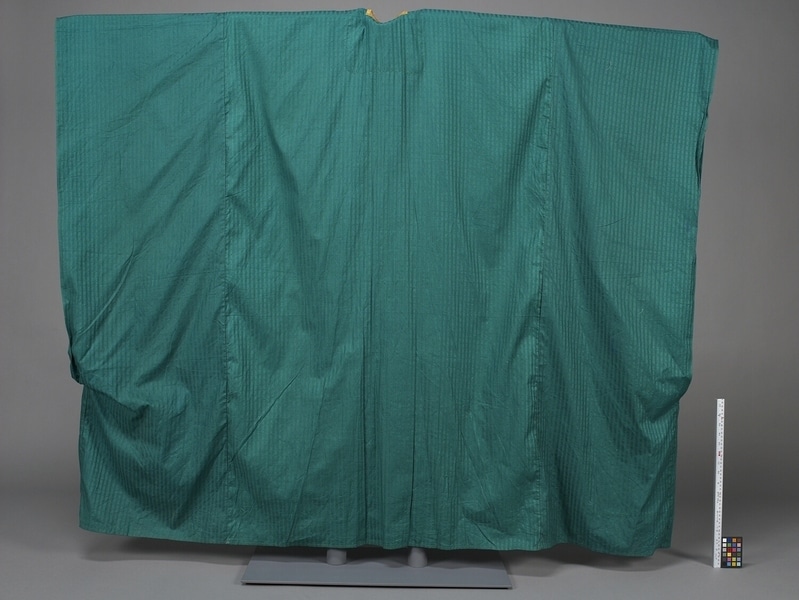Robe Item Number: K2.356 from the MOA: University of British Columbia


Description
Green robe with gold embroidery. The front and back panels are sewn together along shoulder line, leaving an angled opening for the neck. The panels are also sewn together along the lower sides. The front is embroidered with a motif of interlocking rings upon a diamond shape. The robe is machine sewn and machine embroidered.
History Of Use
The boubou (French) is a large, loose-fitting, ankle-length robe worn by men of different groups in West Africa. The garment is said to have originated in the Middle East and introduced to West Africa by Arab and Berber merchants from the Maghreb and Tuareg through the trans-Saharan trade. Records show that this type of robe has been worn since the 11th century in ancient kingdoms across West Africa. The robe is usually worn at special events such as naming ceremonies and weddings. The attire was once considered a symbol of wealth and high-status due to its expensive fabrics and intricate embroidery.
Cultural Context
Worn by Muslim men - pocket and motif placed on the side of the heart.
Item History
- Made in Bouake, Cote d'Ivoire
- Collected by Deborah Taylor between 1971 and 1972
- Owned by Deborah Taylor before 1972
- Received from Leon & Thea Koerner Foundation (Funding source) and Deborah Taylor (Seller) during 1972
What
- Name
- Robe
- Identification Number
- K2.356
- Type of Item
- robe
- Material
- cotton fibre ?
- Manufacturing Technique
- sewn and embroidered
- Overall
- height 178.5 cm, width 147.0 cm
Who
- Culture
- Dioula
- Field Collector
- Deborah Taylor
- Previous Owner
- Deborah Taylor
- Received from
- Leon & Thea Koerner Foundation (Funding source) and Deborah Taylor (Seller)
Where
- Holding Institution
- MOA: University of British Columbia
- Made in
- Bouake, Cote d'Ivoire
When
- Collection Date
- between 1971 and 1972
- Ownership Date
- before 1972
- Acquisition Date
- during 1972
Other
- Item Classes
- textiles
- Condition
- good
- Accession Number
- 0200/0064